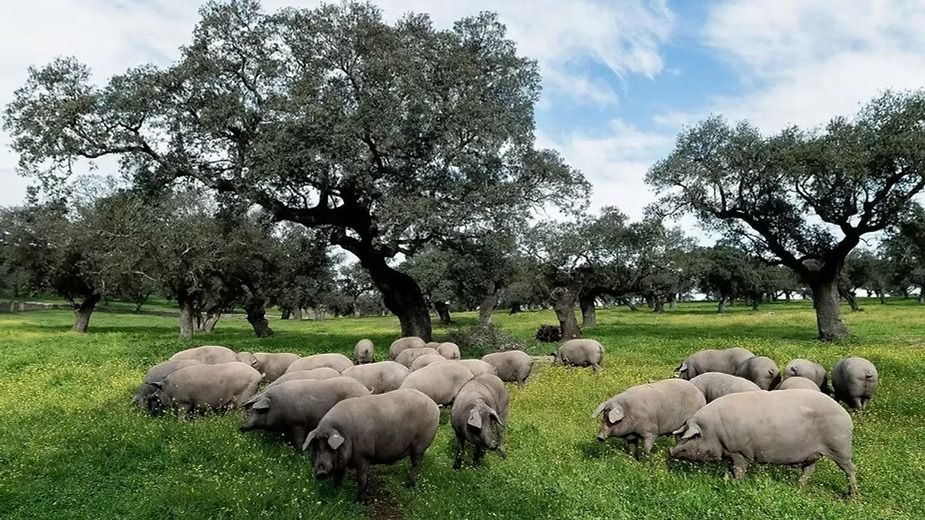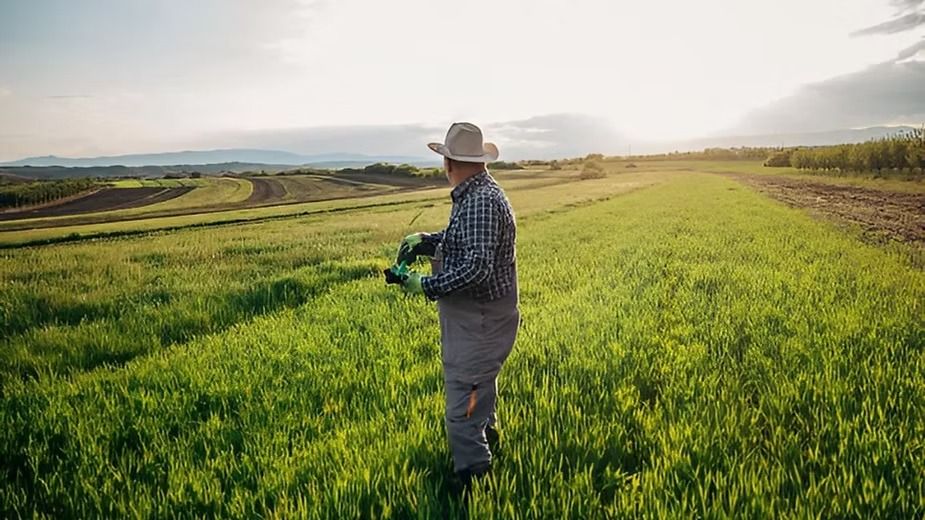What Are the Benefits of Agroforestry? Discover the Types & Key Benefits!
Published on July 28, 2025

Agroforestry is more than just a farming practice; it's a holistic approach to land management that combines the best of agriculture and forestry.
By integrating trees, shrubs, and other perennials into agricultural landscapes, agroforestry creates a dynamic system where every element supports the other, leading to healthier soils, richer biodiversity, and more resilient communities.
The benefits of agroforestry extend beyond merely improving yields; they also foster a sustainable relationship with the environment that future generations can build upon. Embracing these benefits ensures a balanced and enduring approach to land stewardship.
Types of Agroforestry
Agroforestry encompasses various systems, each tailored to meet specific environmental, economic, and social needs. These systems are designed to maximize the agroforestry benefits by integrating trees and plants with crops and livestock.
By leveraging the synergy between different components, agroforestry enhances productivity, sustainability, and resilience, demonstrating how diverse strategies can effectively address complex land management challenges.
1. Silvopasture

Maximizes land use by combining livestock and tree farming for mutual benefits.
This system blends livestock grazing with tree and shrub cultivation, showcasing key benefits of agroforestry. The trees provide shade and shelter for animals, enhancing their well-being, while the understory vegetation offers nutritious forage. The result is a productive and sustainable system that improves land use efficiency and highlights the numerous agroforestry benefits in creating a balanced and resilient agricultural environment.
2. Alley Cropping

Boosts crop yields while providing additional income from tree harvests.
In this approach, crops are grown between rows of trees, which act as windbreaks and reduce soil erosion, demonstrating the key agroforestry benefits.
The trees can be harvested for timber, fruit, or nuts, adding another income stream for farmers. Alley cropping also enhances microclimates for crops, leading to better yields and showcasing how integrating trees into agricultural systems can provide multiple advantages.
3. Agrosilviculture

Improves soil fertility and biodiversity through the integration of trees and crops.
This system integrates traditional crop farming with forestry, showcasing significant agroforestry advantages. Trees and crops are planted together, enriching the soil and increasing biodiversity. Agrosilviculture helps maintain soil fertility naturally, reducing the need for chemical fertilizers and highlighting how combining trees with crops can enhance ecological balance and sustainability.
4. Forest Farming

Leverages forest ecosystems to grow high-value crops, promoting biodiversity.
Forest farming utilizes the shaded understory of existing forests to grow high-value crops like medicinal herbs, mushrooms, and nuts. This method promotes biodiversity and uses the natural forest ecosystem to produce diverse yields.
What Are the Benefits of Agroforestry?
1. Environmental Sustainability
Agroforestry is a powerful tool for environmental sustainability, offering solutions to some of the most pressing ecological challenges of our time. By integrating trees into farming systems, agroforestry enhances soil structure, increases organic matter, and supports nutrient cycling, demonstrating key benefits of agroforestry.
Trees act as natural barriers against soil erosion and help in conserving water by reducing runoff and increasing groundwater recharge.
Additionally, the carbon sequestration potential of agroforestry is significant; trees absorb carbon dioxide, helping to mitigate the effects of climate change. This makes agroforestry not just a farming practice but a vital component of climate-smart agriculture, showcasing its profound environmental benefits.
Enhances Soil Health
Agroforestry boosts soil health by improving soil structure through deep-rooted plants, which increase organic matter and nutrient levels, resulting in more fertile and productive land.
Conserves Water
By reducing surface runoff and enhancing water infiltration, agroforestry conserves water, maintaining soil moisture and reducing the need for frequent irrigation.
Sequesters Carbon
Agroforestry sequesters carbon by capturing CO2 in trees and soil, helping to mitigate greenhouse gas emissions and combat climate change.
2. Economic Resilience
The economic benefits of agroforestry are as diverse as the systems themselves, illustrating the broad agroforestry benefits. By diversifying production through the integration of trees, farmers can tap into new revenue streams, whether from timber, fruits, nuts, or medicinal plants.
This diversification reduces financial risk, providing a buffer against market fluctuations and crop failures. Moreover, agroforestry can lead to cost savings by improving soil fertility and reducing the need for chemical inputs. The long-term nature of tree crops also means that agroforestry systems can provide sustained income over many years, contributing to the economic resilience of farming communities and showcasing the significant economic advantages of agroforestry.
Diversifies Income Sources
Agroforestry diversifies income by allowing farmers to produce multiple crops, such as timber, fruits, and nuts, alongside traditional crops, creating various revenue streams.
Reduces Financial Risk
By integrating different crops and trees, agroforestry reduces financial risk, as farmers are less dependent on a single crop, protecting them from market fluctuations or crop failures.
Provides Long-Term Economic Stability
Agroforestry offers long-term economic stability by ensuring continuous income through sustainable practices, with trees providing valuable resources like timber and fruit over time.
3. Social and Community Well-being
Agroforestry’s social benefits extend far beyond the farm, highlighting the key agroforestry advantages. By creating green spaces within agricultural landscapes, agroforestry enhances the aesthetic and recreational value of the land, making it more inviting for community gatherings and educational activities.
Community-based agroforestry projects empower local populations by involving them in the planning and management of their resources, fostering a sense of ownership and responsibility. These projects also strengthen social ties, as they bring together people from diverse backgrounds to work towards common goals, promoting inclusivity and mutual understanding.
Creates Green Spaces
Agroforestry creates green spaces within communities, offering natural areas that can be used for recreation, relaxation, and community events, thereby improving quality of life.
Enhances Community Engagement
These green spaces encourage community engagement by providing shared environments where people can gather, work together on projects, and connect with nature, fostering stronger relationships.
Fosters Social Cohesion
By bringing people together in communal spaces, agroforestry fosters social cohesion, promoting a sense of belonging and unity among diverse community members through shared activities and goals.
4. Enhanced Biodiversity
Agroforestry systems are champions of biodiversity, showcasing the many benefits of agroforestry. By incorporating a variety of plant species and creating multi-layered ecosystems, agroforestry supports a wide range of wildlife, from pollinators to predatory insects that naturally control pests.
This biodiversity is crucial for maintaining ecosystem balance and resilience, especially amid environmental changes. Agroforestry also encourages the conservation of native species, preserving genetic diversity and contributing to the overall health of the environment.
Supports Diverse Ecosystems
Agroforestry supports diverse ecosystems by creating habitats for various plant and animal species, enhancing biodiversity and contributing to a balanced, resilient environment.
Controls Pests Naturally
By promoting a mix of plant species, agroforestry naturally controls pests through biological diversity, reducing the need for chemical pesticides and fostering a healthier ecosystem.
Preserves Genetic Diversity
Agroforestry preserves genetic diversity by cultivating a wide range of plant species, maintaining genetic variations that are crucial for resilience against diseases and environmental changes.
5. Improved Water Management
Effective water management is one of the key benefits of agroforestry. Trees in agroforestry systems play a crucial role in regulating the hydrological cycle. They help retain moisture in the soil, reduce surface runoff, and improve the recharge of groundwater aquifers.
This not only ensures a stable water supply for crops and livestock but also protects against flooding and drought. By improving water infiltration and reducing the need for irrigation, agroforestry contributes to more sustainable water use, particularly in arid and semi-arid regions, demonstrating the significant advantages of agroforestry in water management.
Enhances Water Retention
Agroforestry enhances water retention by increasing soil organic matter and root systems, which improves soil's ability to hold moisture and supports more efficient water use.
Reduces Runoff
The vegetation in agroforestry systems reduces runoff by slowing water flow and promoting infiltration, which prevents soil erosion and maximizes water absorption.
Promotes Sustainable Water Use
By improving soil health and reducing runoff, agroforestry promotes sustainable water use, helping to conserve water resources and ensure long-term availability for agricultural needs.
At Swasya Living, we understand that true sustainability goes beyond conventional farming practices. That's why we offer land that is ideal for implementing agroforestry systems.
Our mission is to provide spaces where sustainable agriculture can thrive, integrating the best of nature into every farming endeavor.
With a focus on innovation and ecological stewardship, Swasya Living is dedicated to fostering practices that not only sustain the land but also enrich the lives of those who work it.
Conclusion
The benefits of agroforestry are profound, offering a multifaceted approach to sustainable agriculture that addresses environmental, economic, and social challenges.
From enhancing soil health to supporting biodiversity and creating resilient communities, agroforestry presents a viable path forward for farming in the 21st century.
As more farmers and landowners adopt these practices, the positive impact on both the land and society will continue to grow, paving the way for a more sustainable and prosperous future.
